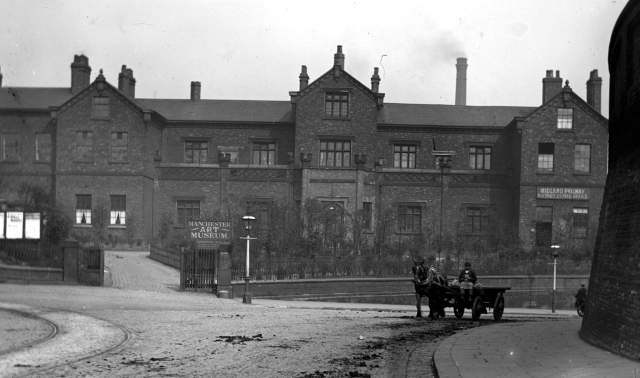The Lonely Cottages: Ancoats March 28, 2013
Author: Beach Combing | in : Medieval , trackback
Beachcombing has a bit of a thing about unsuitable placenames: placenames that may once have been efficient but that by now are simply inappropriate. A favourite example of this is Ancoats in central Manchester. Ancoats for those who have never had the chance to walk on its dirty cobbles was once one of the most industrialised parts of that most industrial city, Victorian Manchester. Indeed, in the nineteenth-century Ancoats had a reputation for industrial grime with Italian and Irish immigrants pouring into tenements that even Lancashire peasants frowned at. By the 1930s it housed some of Britain’s worst slums, slums that were finally cleared out only in the 1960s. There have been many heroic attempts since to make Ancoats a gentile quarter of a sophisticated modern city, but you have only to wander down Great Ancoats Street to see the smoke of decades past high up on the buildings.
Placenames, however, are wonderful in allowing us to peel back more modern associations and to get at what this particular location meant to our ancestors of a thousand years ago. Ancoats, in fact, is made up of two antique words, both that date back to the Middle Ages and perhaps even the Dark Ages. The first part comes from ‘ana’ or ‘lonely’; while the second element is ‘cot’ or cottages. We have then the ‘Lonely Cottages’ on what in medieval times was clearly an isolated piece of high ground above the gorge of the Irwell. Of course, for those nineteenth-century Donegal workers, crammed in five or six to a room, missing their forty shades of green, this would have been a sick joke. Indeed, along with some other modern urban areas – for example, Glasgow that meant originally ‘the Green Hollow’ – Ancoats has inherited a singularly unsuitable name. Other examples, please contact: drbeachcombing AT yahoo DOT com
But stand among the newly regenerated mills there and imagine yourself back in 1212 in the reign of bad King John when Ancoats was first recorded and something strange happens. With your eyes closed you can just about ‘see’ a few shacks huddling up together in the winds, the nearest settlement on the hills out of sight or across the difficult to cross marshes that once defined the area where today central Manchester stands. Manchester that today dominates the landscape is, it should be remembered, a relatively recent arrival. There was no town to speak of before the late thirteenth century when the first market was recorded in 1282. The Lonely Houses may not have spent much time on their own, but when they got their name they were presumably the only cottages for miles around…
31 Mar 2013: ML writes in with a cracker ‘the Chinese characters for Hong Kong mean “Fragrant Harbour”. Thanks ML!


